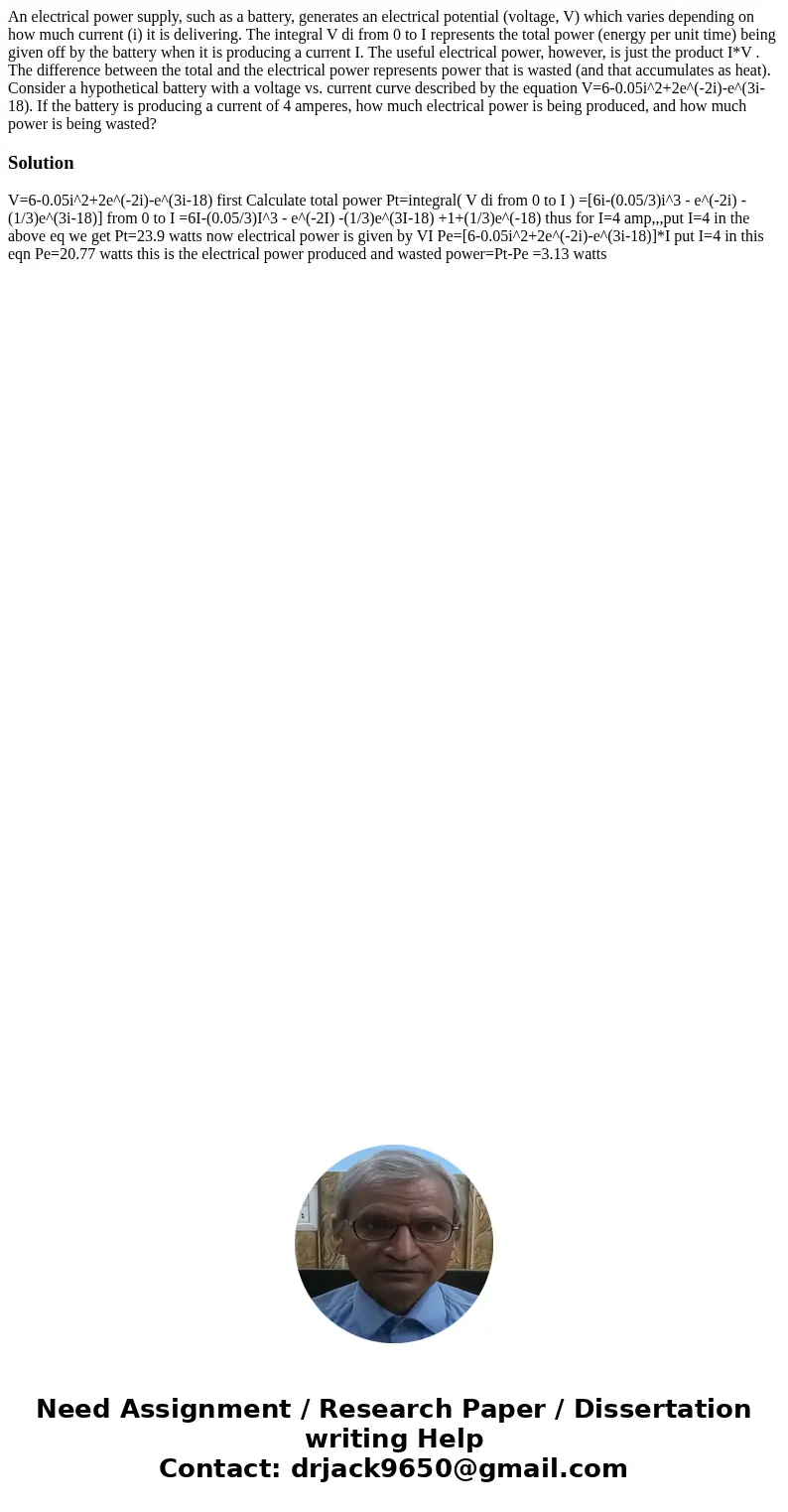An electrical power supply such as a battery generates an el
An electrical power supply, such as a battery, generates an electrical potential (voltage, V) which varies depending on how much current (i) it is delivering. The integral V di from 0 to I represents the total power (energy per unit time) being given off by the battery when it is producing a current I. The useful electrical power, however, is just the product I*V . The difference between the total and the electrical power represents power that is wasted (and that accumulates as heat). Consider a hypothetical battery with a voltage vs. current curve described by the equation V=6-0.05i^2+2e^(-2i)-e^(3i-18). If the battery is producing a current of 4 amperes, how much electrical power is being produced, and how much power is being wasted?
Solution
V=6-0.05i^2+2e^(-2i)-e^(3i-18) first Calculate total power Pt=integral( V di from 0 to I ) =[6i-(0.05/3)i^3 - e^(-2i) -(1/3)e^(3i-18)] from 0 to I =6I-(0.05/3)I^3 - e^(-2I) -(1/3)e^(3I-18) +1+(1/3)e^(-18) thus for I=4 amp,,,put I=4 in the above eq we get Pt=23.9 watts now electrical power is given by VI Pe=[6-0.05i^2+2e^(-2i)-e^(3i-18)]*I put I=4 in this eqn Pe=20.77 watts this is the electrical power produced and wasted power=Pt-Pe =3.13 watts
 Homework Sourse
Homework Sourse